Discover Nature: 15 Most Beautiful Australian National Parks
Contents
- Daintree National Park, QLD
- Noosa National Park, QLD
- Great Sandy National Park, QLD
- Litchfield National Park, NT
- Uluru-Kata Tjuta National Park, NT
- Mungo National Park, NSW
- Mole Creek Karst National Park, TAS
- Royal National Park, NSW
- Flinders Chase National Park, SA
- Great Otway National Park, VIC
- Watarrka National Park, NT
- Nambung National Park, WA
- Springbrook National Park, QLD
- Lamington National Park, QLD
- Mary River National Park, NT
Show more
Australia is truly a country for nature lovers and for many of us, we are itching to get out to explore The Great Outdoors. The good news is as restrictions start to lift, national parks are going to be some of the first areas we can leave our house to roam. We are lucky to live in a country whose sheer size lends itself to a wide variety of landscapes; from mountain ranges and deserts, to tropical rain forests, and beaches. The lush hinterlands, sea cliffs, dense rain forests, and canyons are all there waiting to be explored - now more than ever.
So as you plan where your next adventure will be when you can go, let us help by rounding up some of Australia's best National Parks for you to consider. Remember to check the official park websites for the most updated information on entry, closures and permits as each state and territory has different laws and restrictions.
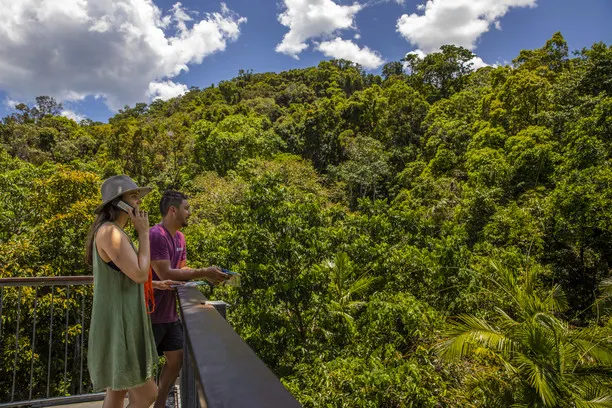
Located in the wet tropics of Far North Queensland is the World Heritage Listed Daintree National Park. Entering south of Daintree River at Mossman Gorge you will find the Daintree Discovery Centre that begins a spectacular walk through picturesque sceneries such as the Baral Marrjanga, Rex Creek Bridge, and Lower River Track. Cape Tribulation is a gem that offers both lowland rainforest and untouched beaches. The traditional owners of the land are the Kuku Yalanji People, who are also known as the "rainforest people" due to their close affinity with the surroundings. The park is home to over 400 species of birds and an array of wildlife including the swamp wallaby, platypus, chameleon gecko, amethystine python, and white-lipped tree frog.
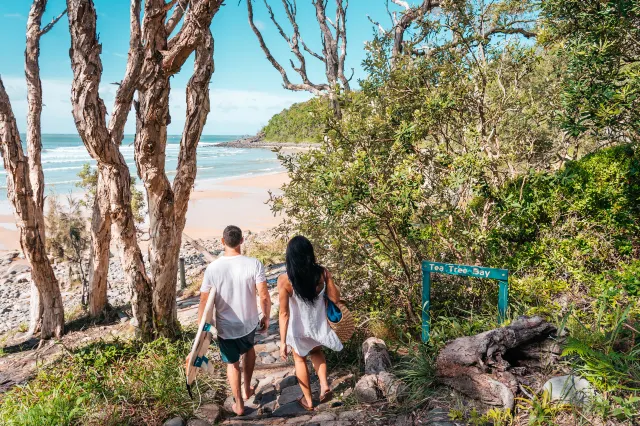
This 4000-hectare national park is an Australian National Park located near Noosa Heads, 160km north of Brisbane on the Sunshine Coast. It is divided into four sections: East Weyba, Emu Mountain, Peregian, and the Headland. Many beaches in the park provide excellent swimming spots and other activities like rock climbing, surfing, snorkelling, and fishing can be conducted in the park.The rainforests are dominated by kauri pines and hoop pines with wallum heaths, pandanus plants, and eucalyptus trees seen in certain areas. Christmas bells and swamp orchids blossom during spring and add a touch of colour to the Peregian section. Animals and birds such as the glossy black cockatoo, eastern yellow robin, short-nosed bandicoot, brushtail possum, and crimson rosella are found in abundance. Migrating humpback whales can be spotted in the headlands section.

Great Sandy National Park is situated in the Fraser Coast region of Queensland. This Australian National Park is home to pristine beaches, swamps, creeks, mangrove forests, rainforests, heathlands, freshwater lakes, and large sand dunes. It is divided into the Cooloola Recreational Area and the Fraser section (K’Gari), which encompasses almost all of the world's largest sand island, Fraser Island. There are a large number of bird species to look out in this coastal park for while whale watching, four-wheel driving, and bushwalking are also very popular activities. Fun facts: Fraser Island is the only place in the world where large trees grow in sand and there are two shipwrecks in the Cooloola area. Camping is allowed upon obtaining permits.
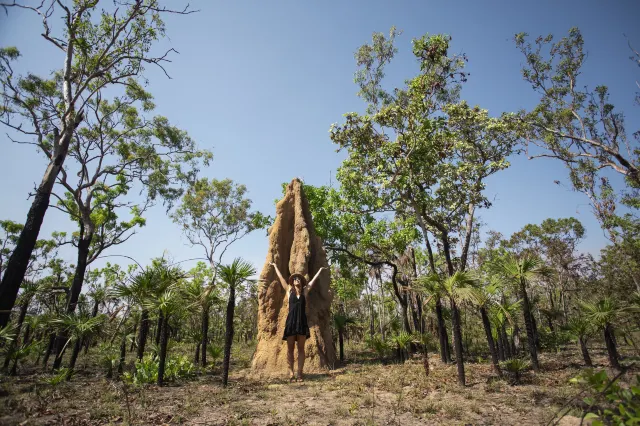
Litchfield National Park attracts thousands of visitors each year, and with good reason. This stunning ancient landscape span has many features truly characteristic of the Northern Territory: mesmerising cascade waterfalls, long red dirt roads with kangaroos, crocodile-infested waters, and out of this world termite mounds. If you are into your flora you can find species such as banksias, terminalias, Darwin stringybark, Woolybutt, and Grevilleas. The main attractions in the park include several falls such as Florence, Tolmer, Buley, Wangi, Tjaetaba, and Surprise creek falls. The Blyth Homestead and Bamboo creek too attract tons of visitors. If you really want a taste of Australia's Top End, there is nowhere better than Litchfield National Park.
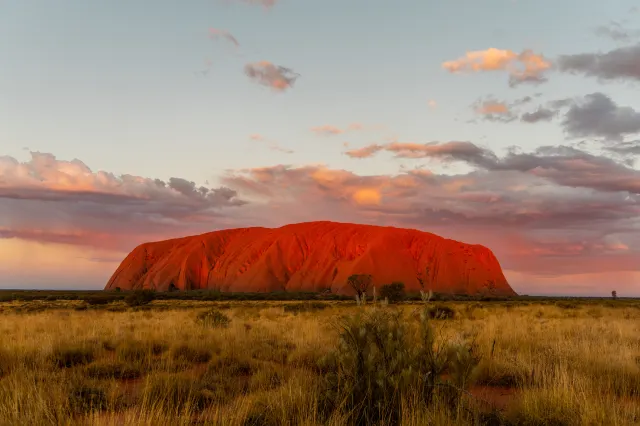
Uluru-Kata Tjuta National Park is home to two of Australia’s iconic rock formations and spans across 327,414 acres of Australian desert outback. Uluru, or Ayers Rock as it is also known, is a massive sandstone formation standing at 348 metres high. Since November 2017 it is no longer allowed to climb Uluru out of respect of the Traditional Owners of the land. Within Uluru-Kata Tjuta National Park you will also find the 36 red-rock domes of the Kata Tjuta, also known as ‘The Olgas’. The closest large town is Alice Springs situated 450km away however there is a township called Yulara outsideo of Uluru-Kata Tjuta National Park, about a ten-minute drive from the entrance. In Yulara is Ayers Rock Resort, which provides accommodation, restaurants and other essential services to people visiting the park. At the time of publication, the resort was taking bookings from 1 September 2020.
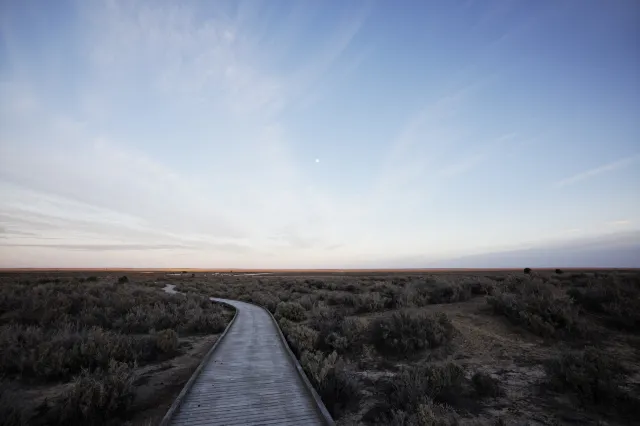
Mungo is a protected national park in south-west New South Wales. The most stunning feature of this park is Lake Mungo. It is the second largest of the ancient dry lakes. The park is also of value for its archaeological remains of the Mungo Man and Mungo Lady (the oldest human remains discovered in Australia) that were discovered in the park. Explore the park's rich Aboriginal history and enjoy the long walking trails. Camping is permitted near Lake Mungo. Wildlife spotting can be done around Zanci Pastoral Loop, Rosewood picnic area, and Round tank area. The Willandra Lakes is a World Heritage Site, which is of great significance to the Ngyiampaa, Southern Paakantyi, and Muthi Muthi aboriginal people of the area. It is said that their ancestral spirits dwell in these regions.

Discover the best of Tasmania at Mole Creek Karst National Park. Part of the Tasmanian Wilderness-World Heritage Site, it has a characteristic network of caves filled with extensive bone deposits, stalactites, and stalagmites that are incredible to view. Of these, the Marakoopa caves is known for its gorgeous Glow Worm display featuring two streams, beautiful caverns, flowstone features, shawls, and rim pools. The Mole Creek Karst systems, like most Australian National Parks, are home to several endangered and rare species such as beetles, bandicoots, eagle, crayfish, and Cave Harvestman. Sphagunum peatlands across the park have led to the creation of many sinkholes across the region and are found scattered among the eucalyptus forests. Flora include black gum, stringybark, silver wattle, black peppermint, and white gum. Endangered, rare, and vulnerable flora include sallow wattle, slender tick trefoil, Poison rice flowers, and narrow leaf pomaderris.
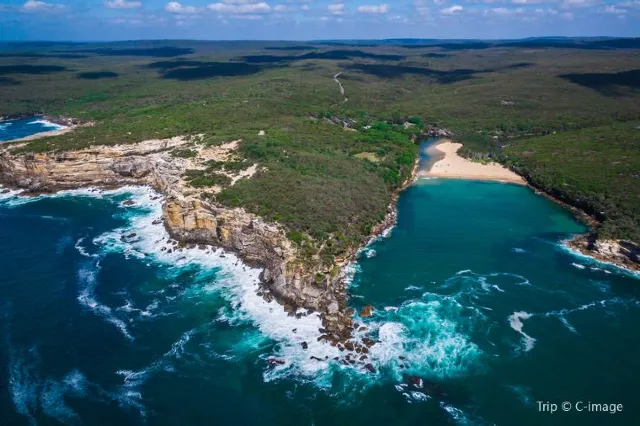
Visit the Royal National Park, south of Sydney, and you will be visiting the second oldest national park in the world after Yellowstone in the US. This national park is home to settlements of Bundeena, Maianbar, and Audley aboriginals. The wide variety of terrain in the park spans coastal cliffs, small inlets, high plateaus, and deep river valleys. Geologically the region mainly consists of Triassic Hawkesbury Sandstone with some sections having newer shale capping. The national park has several systems such as the mangroves and salt marshes, Riparian forests, tidal rock shelves with rock pools, beaches, and valley floors. The pools are home to the blue-line octopus, which is fatally toxic. It is very hard to spot and inhabits the rock pools. Tourists to Australian National Parks are advised not to enter the rock pools as the sting of the octopus could result in mortality within minutes. Park highlights include the Wattamolla beach, Figure 8 pool south of Burning Palms, Eagle Rock, Curracarong waterfalls, and Lady Carrington Drive.
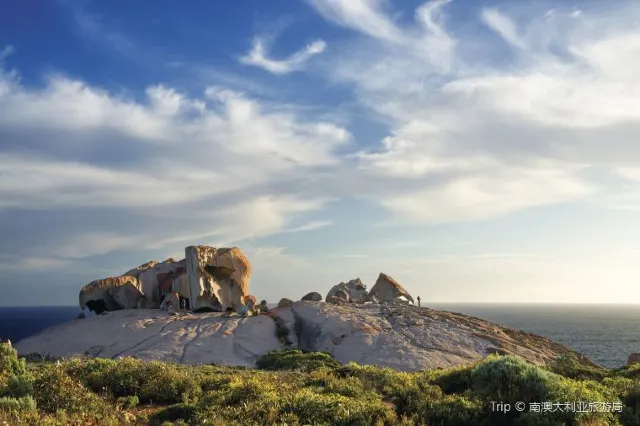
Flinders Chase is one of Australian National Parks located at the west end of Kangaroo Island in South Australia. It is known to be a sanctuary protecting several endangered species and is also the ground for certain geological marvels. The park consists of three vivid parcels of land- Cape Du Couedic, The Gosse Land, Lighthouse reserve at Cape Borda. The first acquired lands as part of the park were done to protect flora and fauna under the reserve Act of 1919. The sanctuary has species that were introduced from the mainland as well as local species. Koalas and platypus were among the species introduced into the habitat. Little penguins were seen in here but are, though now, to be extinct due to an increase in long-nosed fur seals. The park is home to ‘Remarkable Rock’, naturally-sculpted rock formations balanced on top of a granite outlier. Cape Du Couedic is another geological monument that was formed when sea levels started to rise at the start of the current geological epoch. It consists of metamorphic rocks that belong to Middleton Sandstone.

Great Otway is known for its scenic beauty, dotted with waterfalls here and there. This includes the three cascades of Triplet Falls, too, which are a popular attraction in the park. The park consists of three camping areas at Aire River, Johanna, and Blanket bay. The park is known to cover coastlines as well as hinterlands and has access to beaches and forests of the Otway Ranges. All of these are accessible through walking trails. A significant koala population inhabits the grounds of the Aire river campgrounds. Migrating humpback whales, bottlenose dolphins, and southern right whale have been spotted just off the coastline. The stream banks have bioluminescent glow worms, which are the larvae of fungus gnats. The park has also been classified as an Important Bird Area among Australian National Parks due to its population of rufous bristlebirds, pink robins, and striated fieldwrens. Ghost fungus, which glows a light green at night is easily spotted at night on trees, while Ruby Bonnet fungus and Flame Fungus are a red coloured growth that can be distinguished easily due to their colour.
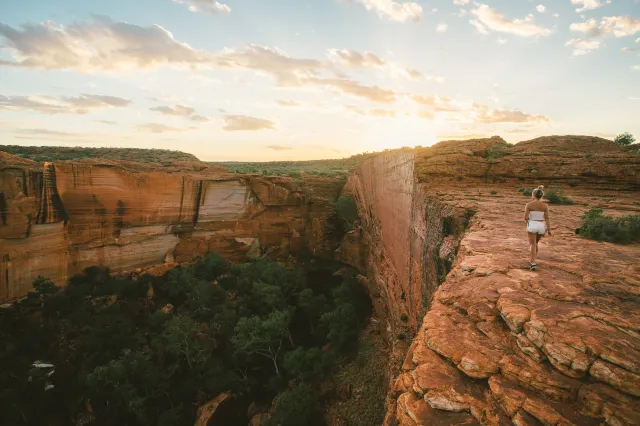
Watarrka National Park is in the Northern Territory about 1300 kilometres from Darwin. Founded in 1989, it takes its name from the aboriginals of the land. It is best known for being home to the iconic Kings Canyon with its famous red cliffs overlooking the palm trees below. The Kathleen Springs south of the Kings Canyon are also very popular. There are three different walks at the canyon, the most popular being the 6-kilometre Rim walk that lines the top of the canyon and takes about four hours. The beginning of the walk is nicknamed ‘Heartbreak Hill’ due to the steep incline. Halfway into the walk, a descent detours down to the Garden of Eden, which is a permanent waterhole surrounded by beautiful flora. Here you may spot the zebra finch, grey-headed honeyeater, peregrine falcon, and black-breasted buzzard out here.

Nambung is known for its Pinnacle deserts, which are WA's most visited attraction. The Pinnacles are natural limestone formations standing as high as 5 metres and originating from approximately 25,000 to 30,000 years ago. Located in the Wheatbelt region of Western Australia, the park derives its name from an Australian indigenous word that means 'winding'. The park consists of coastal dunes and flowering plants in low heathlands and beaches along Kangaroo Point and Hangover Bay. Around the area at Lake Thetis, a boardwalk allows visitors to view thrombolites, which are erections built by cyanobacteria. Fossilised thrombolites have been dated as far back as 3 billion years ago. The flora and fauna here is abundant and includes red fox, honey possum, red kangaroo, silver gull, red-capped plovers, sand goanna, yellow-faced whip snake, and ravens. The only amphibian spotted here is the sign-bearing froglet. Flora includes sea nymph, cowslip orchid, coastal wattle, and acorn banksia. Sea-lions and dolphins are seen all year-round along the coastline of this Australian National Park.

Located in the hinterlands of the Gold Coast, Springbrook lies near the McPherson Ranges. It is a part of the Shield Volcano Group of the World Heritage sites for Australian National Parks. The waterfalls that run through the Natural Bridge section are a marvellous sight, and night tours are conducted in adjoining caves to view the glow-worm lights. The natural bridge is a natural wonder created by rocks that were eroded by the waterfalls to create a cave underneathand a pothole that connects it on top. The Springbrook section has several waterfalls, and the walking trail passes at least nine of them. All sections of the park allow picnics. The reserve has rock overhangs, cliffs, rock falls, tall beech trees, giant brush box trees, sugar gliders, possums, birdwing butterflies, and red-necked pademelons.
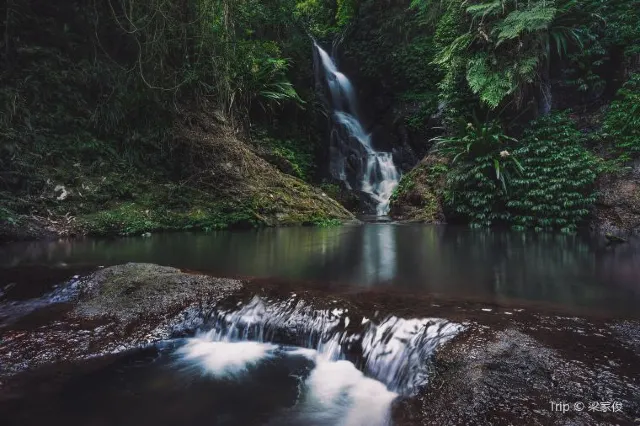
Lamington is a Natural Heritage Park well-known for its waterfalls, birdlife, rainforests, mountain views, and walking trails. Most parts of the park are remnants of Tweed Volcano. The Nerang, Albert, and Coomera rivers all originate from Lamington National Park. The park, similar to some of the other Australian National Parks, has many waterfalls, caves, and wildflower heaths, which make for a perfect trail for bushwalking through the park. There are many plants in Lamington which are not found anywhere else on earth, like the Underground Orchid, Everlasting Daisy, and Peach Myrtle. Strangler figs and red carabeen, yellow carabeen, and rosewood are also found in Lamington. The regent bowerbird and the crimson rosella are often spotted too. Visitors can see Elbana falls, Morans falls, and several other waterfalls that dot the national park at regular intervals.
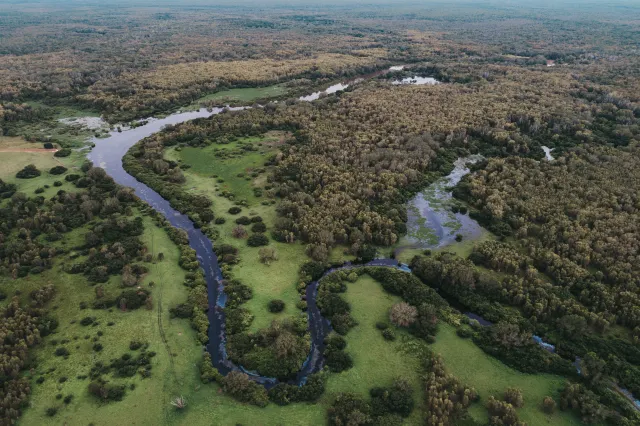
The Mary River National Park is a mix of several small reserve areas that protect and surround the Mary River Catchment area. The park is a perfect place for picnics around the Arnhem highway. Rockhole and Couzens lookout are other places where you can access the Mary River. Barramundi fishing is popular at Rockhole, and Couzens offers breathtaking sunset views. Brian Creek Monsoon Forest is noteworthy for its stark contrast to the surrounding woodlands. Shady Camp offers a boat ramp, picnic areas, and other facilities that make it a great spot to take the family.
Image credits: Destination NSW, Visit Victoria, Tourism NT, Tourism & Events Queensland.
Trending Travelogues
Popular Trip Moments
Popular Attractions
Popular Ranked Lists
Popular Destinations
Recommended Attractions at Popular Destinations





Site Operator: Trip.com Travel Singapore Pte. Ltd.






